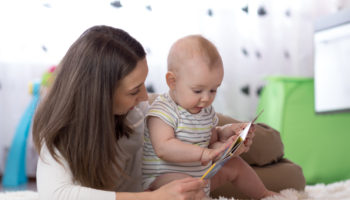Amy Hoffman
A few weeks ago, a friend commented that her 5-year-old had been “feeling all the feelings” earlier in the day. He was reacting to those feelings by crying when she left his sight, yelling at his younger sister, and refusing to follow directions. And how did my friend react to this? She set aside her agenda and devoted time to him. She cuddled with him and gave him her undivided attention until he chose to leave her lap and resume his day. And guess what? He was able to cope with his feelings in a positive manner for the rest of the day.
Feelings can be huge and can be difficult to deal with – and not just the feelings that we consider to be “negative.” Young children often don’t have the vocabulary to talk about how they’re feeling, so they express those feelings in other ways. A huge part of an early childhood educator’s job is to show children how to manage their feelings in constructive ways. This can lead to positive experiences later in life including a strong sense of self, resiliency, and good relationships.
So, what can you do? How do you teach feelings? Here are a few ideas (and see the links below for more!):
- Use words to name the feeling before, during, and after the child is experiencing it. This helps to develop an emotional vocabulary so children can talk about feelings. It also lets them know that it is okay to feel those emotions.
- Identify feelings in others. Using books or pictures to guide children to discuss emotions will help them to learn empathy and to learn the names for feelings (see above).
- Be a role model. Children learn a lot by how they see you responding when you’re dealing with strong emotions.
- Acknowledge the legitimacy of children’s feelings instead of dismissing them or trying to make huge feelings go away. Encourage them to express how they’re feeling.
Here are some other strategies to use in your classroom to help children to release their emotions in positive ways:
- Teach them to take deep breaths. This video from Mindful Schools includes a deep breathing practice (especially from 1:30 on).
- Coach them to use the actual words for how they are feeling.
- Provide a space for privacy so children can have a quiet place to calm down and escape the stress of the situation or the classroom. Encourage them to use it.
- Encourage them to hug a teacher or to self-hug. Check out this video from Sesame Street about self-hugs.
What are some ways that you help children who are feeling all the feelings? Leave a note in the comment box.
And check out these links for more information:
CSEFEL Website (many great resources from the Center on Social and Emotional Foundations for Early Learning)
Helping Kids Identify and Express Feelings (an article for parents that is relevant for teachers)
Lessons from Inside Out (for adults and older children about Pixar’s “Inside Out”)




